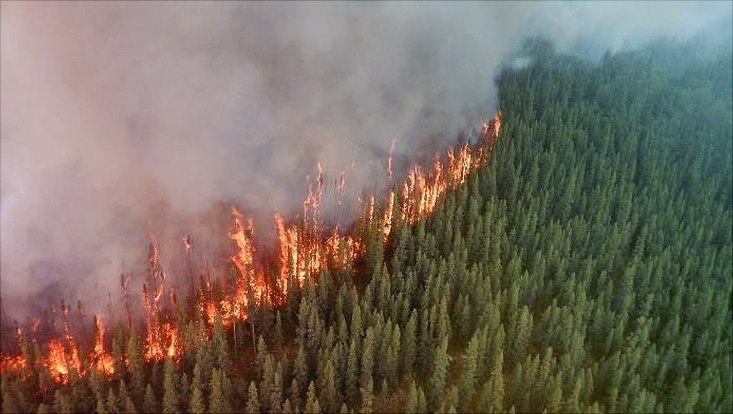Vicious Circle in the ArcticWildfires in Alaska and Siberia are worsening climate change
2 August 2019, by Christina Krätzig

Photo: National Park Service, USA
Since June of this year, wildfires have ravaged major expanses of the Northern Hemisphere. The World Meteorological Organization has described the scale of damage as “unprecedented.” In the following, the soil researcher Prof. Eva-Maria Pfeiffer from Universität Hamburg explains why climate change will make such fires more likely in the future, and how they affect the climate.
Since the heat wave in June, in Alaska an area roughly the size of Schleswig-Holstein has burned, as a result of which several villages have had to be evacuated. And the regions in Siberia are purported to be twice that size. Though the actual situation in Russia – thanks to the sheer size of the country, together with its restrictive information policy – remains unclear, many fires are clearly visible in satellite imagery.
Since 1992 Eva-Maria Pfeiffer has regularly taken part in research expeditions to the Russian and American regions of the Arctic, and has investigated the soils in these largely untouched landscapes and their role in the Earth’s climate system. As such, for her it comes as no surprise that fires will become more frequent in the future: “Over the past few decades, temperatures in the Arctic have risen by three to five degrees; twice as much as the global mean. In addition, the precipitation patterns have shifted, making it much drier in many areas. The combination of heat and dryness substantially increases the risk of wildfires,” she explains.
“The fires have both short-term and long-term effects on the climate,” Pfeiffer adds. In the short term, large quantities of carbon are released, since trees and other plants largely consist of carbon: when they burn, climate-harmful carbon dioxide is released into the atmosphere.
The more problematic aspect, however, is that the soils themselves burn; or more precisely, their humus-rich (and therefore carbon-rich) upper layer. Just like with the burning trees, this produces CO2. In addition, the fire injects a great deal of additional heat into the soil, thawing the deeper layers beneath it. The result: microorganisms begin breaking down the plant matter stored in the permafrost – releasing additional climate-harmful gases.
“In intact soils, the upper soil horizons, together with vegetation and snow cover, act as an insulating layer,” Prof. Pfeiffer explains. “Once that layer is destroyed, it’s extremely difficult for the permafrost to bounce back.” If temperatures remained constant, it would be possible, though the process would take centuries to complete. But given the current trend of global warming, it’s highly questionable how quickly the permafrost will recover, assuming it can at all; if not, there will be incalculable consequences for the delicate ecosystems in, and the climate of, the Arctic.
Universität Hamburg has gathered considerable expertise in the exploration of Arctic permafrost soils and their role in the climate system, which is e.g. a major research focus for the Cluster of Excellence CLICCS (Climate, Climatic Change, and Society).
You can find an interactive map of the fires in Alaska here.


